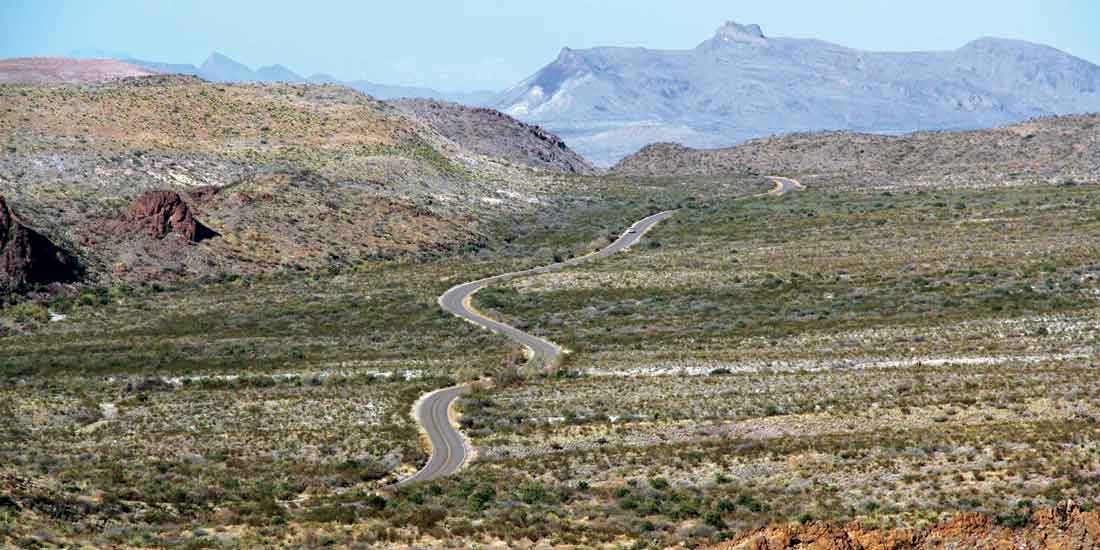
CHISOS BASIN IN BIG BEND NATIONAL PARK
A One-Day to the South from Marfa
Stop 1: Study Butte/Terlingua
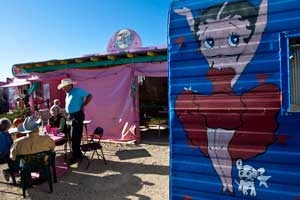
“The jagged eastern horizon, with the mighty Chisos and Sierra Del Carmen mountains, looks like something out of a Flintstones cartoon; closer in are layered canyons, cracked limestone, old riverbeds, rugged outcroppings—it’s as if the earth couldn’t make up its mind what it wanted to be here. Desert? Mountains? Hills? Yes. Enjoy the confusion of Terlingua,” writes Michael Hall in a Texas Monthly article.
Stop 2: Terlingua Ghost Town
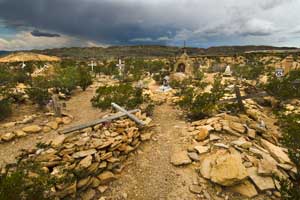
In Study Butte-Terlingua, turn west on 170 and head down the road a short distance to see the remnants of a mining town.
“Live music is a big deal in Terlingua, especially up in the Ghostown,” explains a local resident. “You never know who you might find playing on the porch at the Trading Company, from celebrities to local drunks. And don’t worry about the naked guy directing traffic; he just does that.” Be sure the Ghostown is part of your adventure.
The cemetery shown in the photo in Terlingua’s ghost town rests about 400 souls, mainly from the early part of the 20th century when the mining town thrived for four decades. Aging wooden crosses and cone-shaped dirt and rock mounds called “relicaritos” mark the graves. The graves are predominately of middle-aged Hispanic men who died from the dangers of the area’s mercury mining. The cemetery is still in use.
Stop 3: Entering Big Bend National Park
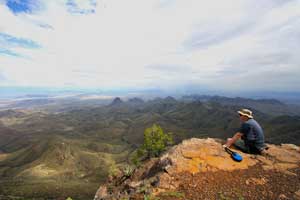
More than 801,000 acres of mountains and desert—the most remote park in the lower 48—await you. Just a two-hour drive from Marfa, Big Bend’s legendary Rio Grande and its tributaries cut vertical canyons through modest mountains frilled with pines and other specially adapted plants that live in the high desert. One of the most important items to bring to Big Bend is water. Staying hydrated will make your visit safer and more pleasant. Hats, sunscreen, and clothing appropriate for the weather all make your trip more comfortable.
Stop 4: Santa Elena Canyon
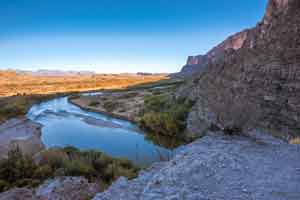
One of the major highlights of Big Bend National Park is Santa Ealena Canyon, which is at the end of the 30-mile Ross Maxwell Scenic Drive. The canyons along the Rio Grande are one of the main reasons the park was established. From the trailhead at the mouth of the canyon, the limestone walls of Santa Elena tower 1,500 vertical feet above the river. The Rio Grande flows east out of the canyon as a narrow slash only 200 feet wide before bending south at the confluence with Terlingua Creek. Stunning views along the 1.5-mile, round-trip trail into the canyon make it well worth the time and effort.
Roadside exhibits at various points along the drive provide opportunities to stretch your legs and learn about the plants, people, and geology of the area. Some of the more popular stops are the Sam Nail and Homer Wilson Ranches, Castolon Historic District, and Tuff Canyon.
Stop 5: Chisos Basin
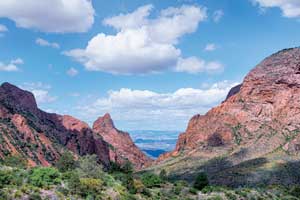
Chisos Basin is a deep valley nestled between craggy volcanic peaks that soar 2,500 feet above Chisos Mountains Lodge and Chisos Mountains Campground.
The basin is a great stop for those seeking mountain vistas. This area is several thousand feet higher in elevation than the canyons and is considerably cooler in summer. Short trails, such as Lost Mine, Window, and the Chisos Basin Loop, give you a taste of the pinyon-juniper forests, seasonal wildflowers, and if you are lucky, some of the local wildlife. Big Bend National Park has surprising diversity—some of the greatest species diversity in North America—among plants, birds, and insects.
Stop at the Chisos Basin Visitor Center to check out exhibits and books about the area and talk to rangers about any questions you might have. The Chisos Basin Lodge has Wi-Fi and serves up good food along with great views.
BEFORE YOU GO…
Don’t except cell service on this trip, it will be spotty at best. Top off your vehicle with fuel, fluids and air for your tires will make the drive more trouble free. The weather can change considerably in just a short time so be prepared for different conditions you may find both on the way, and once you arrive in Big Bend National Park. Be prepared with hats, jackets, and sun protection.
THINGS TO TAKE
One of the most important items to bring on a trip to Big Bend is water. Bring your camera and binoculars as you will benefit from the additional views that open up and memories to be captured through your lens. Big Bend National Park requires an entrance fee which can be taken care of at the entrance stations or the visitor centers.
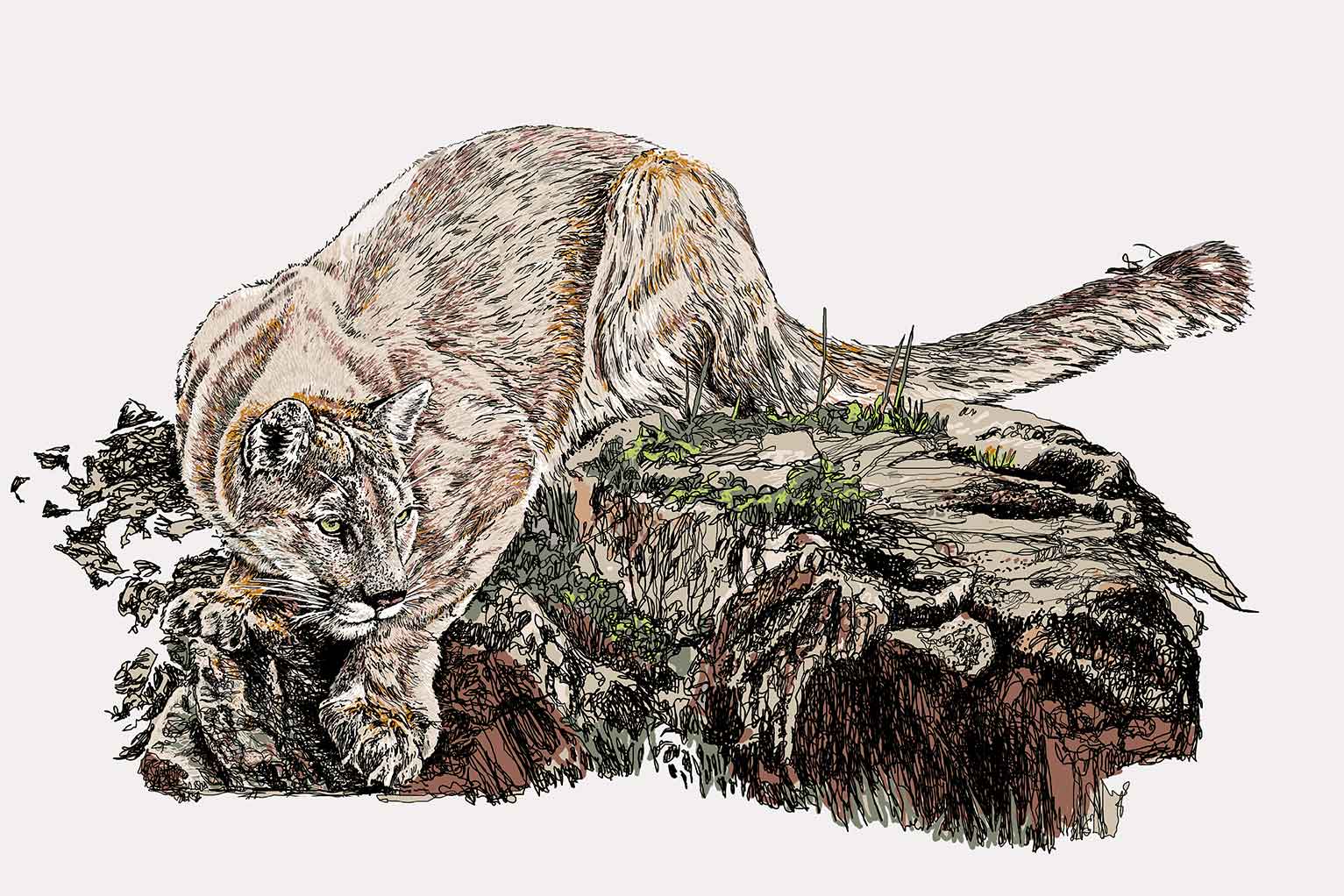
Mountain lions
Mountain lions, or pumas, are secretive but common in Texas. Be aware of your surroundings and stay a safe distance.


